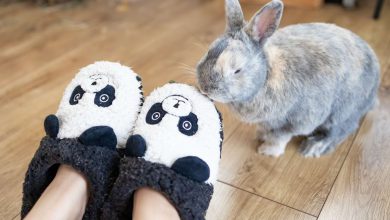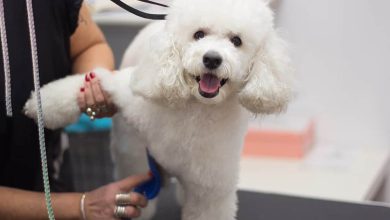First Aid Kit for Guinea Pigs: What to Include

Guinea pigs can get sick or injured just like humans, so it’s a good idea to keep an emergency kit in your home in case of illness or accidents. If you’re new to guinea pigs, you might wonder what should be included in this kit!
Your guinea pigs’ emergency kit should include items for grooming and health checks, such as a kitchen scale and nail clippers. You also want to be prepared if your guinea pig gets hurt with things such as saline solution and vet wrap. Recovery food, needleless syringes, and a towel can help if your guinea pig is ill.
Below, I’ll discuss everything I used to keep in my guinea pigs’ toolkit, as well as some great ideas I’ve learned from others and will definitely be adding the next time I have piggies in my home.
1. A Kitchen Scale

A kitchen scale that measures in grams is an essential part of your guinea pig emergency kit. Weighing your guinea pigs regularly is one of the best ways to catch illnesses early on, which can save your piggies’ lives!
You’ll also want a place to record their weights, such as a notebook or a spreadsheet on your phone.
2. Recovery Food
Recovery foods such as Critical Care are given to guinea pigs who need more sustenance than they’re getting on their own. They may be sick, elderly, or recovering from a surgery.
I recommend having multiple flavors, and maybe multiple brands, on hand at any given time. This way, you’ll hopefully have something for your piggy to eat if needed.
3. Needleless Syringes
You can buy needleless syringes in bulk and use them for giving your guinea pig medicine or syringe-feeding recovery foods.
Keep multiple sizes on hand so you’ll always have what you need, whether it’s a 1ml, 3ml, or 10ml.
4. Nail Clippers

Your guinea pigs’ nails need to be trimmed at least once monthly. This allows them to walk comfortably and prevents their nails from growing into their paw pads.
I’ve always used cat nail clippers to trim my guinea pigs’ nails, but you can also use human nail clippers or buy a pair made specifically for small animals.
5. Styptic Powder
Styptic powder or an equivalent, like corn flour, is used to stop the bleeding if you cut into the quick of your guinea pig’s nail. It can also be used on light wounds such as a shallow cut.
These products are only for minor injuries, and anything more severe requires a vet trip.
6. Q-Tips and Cotton Balls or Pads
Q-tips, cotton pads, and cotton balls are used for a variety of purposes. You can use them for:
- Cleaning wounds
- Applying topical medication to your piggy’s skin
- Cleaning your guinea pigs’ ears (remember never to stick anything inside of their ear canal!)
- Boar cleanings for male guinea pigs
- Moisturizing hairless guinea pigs with coconut oil
7. A Towel

A bathroom towel is great for restraining guinea pigs if you need to administer medication or trim their nails. You can fold it around them to make a “piggy burrito” and hold them still!
8. Paper Towels
Paper towels help with cage cleaning and picking up messes quickly. Of course, you can also keep a reusable option around such as a few dish cloths if you prefer.
9. Contact Numbers for Your Local Veterinarians
You can also keep your vet’s number in your emergency kit, as well as any other vets nearby who treat guinea pigs. If you have an emergency clinic that treats piggies, add their number as well.
This tends to be most helpful if there are multiple people in your home who may need to step up during an emergency and don’t have the vets’ numbers saved, or if you hire a pet sitter.
Personally, I prefer for me and my family members to keep vet contact numbers in our phone’s contacts for faster access.
10. Gauze and Non-Adhesive Vet Wrap
Gauze and vet wrap can be used to bandage wounds and stop bleeding while you call your vet for further instructions and to make an appointment.
11. Saline Solution
Saline can be used to flush guinea pig’s eyes or to clean small wounds, such as shallow cuts if your guinea pigs have had a fight. After, continue to watch for signs of infection or abcess and see a vet if necessary.
12. Tweezers
A small pair of plastic tweezers can remove hay if it gets in your guinea pig’s nose or to get splinters out of their feet.
13. Scissors
Don’t we always need a pair of scissors? Whether you’re opening a new bag of food or cutting gauze to size so you can bandage a wound, scissors are always useful to have around.
14. Probiotics
Many people like to pair probiotics with antibiotics to restore good bacteria in the gut. Make sure to follow your vet’s guidance when it comes to medications, and always let them know you’re adding a probiotic to your guinea pig’s treatment plan.
15. Antiseptic Cream
An antiseptic cream such as Bepanthen First Aid Cream can be used on minor wounds or insect bites to help prevent infection. These should be used on the skin only and kept away from the eyes.
16. Vitamin C Supplement
Like humans, guinea pigs can’t produce their own vitamin C. A healthy diet consisting of daily fresh vegetables should provide enough vitamin C for healthy guinea pigs. But sometimes they need extra help.
Please avoid the supplements that go into your guinea pigs’ water, as these aren’t effective. Some piggies dislike the taste as well, which can make them avoid drinking from their water bottles.
Instead, syringe-feed a liquid vitamin C supplement that’s stored appropriately in a dark bottle, such as the kind made by Child Life.
17. Antifungal Cream
Guinea pigs are prone to fungal infections such as ringworm, so it’s good to have an antifungal cream on hand for any breakouts.
Look for antifungal cream with miconazole nitrate as the active ingredient, and avoid anything steroid-based.
When in doubt, or if the antifungal cream you purchase doesn’t work, contact your veterinarian for guidance.
18. Ivermectin
Ivermectin is commonly used to treat parasites like mites and lice in guinea pigs or as a preventative measure. While it’s effective when used correctly, it is risky to use without veterinary guidance. Guinea pigs are small animals and it can be easy to overdose them.
It’s best to talk to your veterinarian first to see whether they recommend Ivermectin or another product made for guinea pigs.
19. Vet-Prescribed Medications

I like to keep any leftover prescription medications in my first-aid kit if they aren’t past their expiration date and I think they can be used again. Examples are pain relievers or eye ointments.
It’s typically not recommended to keep things like antibiotics, as your guinea pig will need a full round of them to be effective. I also never recommend giving prescription medications without veterinary guidance, even if it seems harmless! If you do give a medication and later visit the vet, make sure they know so that they don’t start your guinea pig on any treatments that could conflict with the medication you gave.
Keeping old medications around primarily comes in handy if your vet prescribes them again in the future, as this can save you money! Some vets will also okay the use of a medication over the phone to save you a trip, or to use until you can get an appointment.
Over time, you’ll learn more about your preferences and what you want to keep in your guinea pigs’ emergency kit. For instance, I’ve included grooming supplies here, but you might want yours stored in their own place. Or, you might prefer different products than those I’ve listed here.
I hope this article has given you a good place to start and that you customize your emergency kit to meet your and your guinea pigs’ needs!



